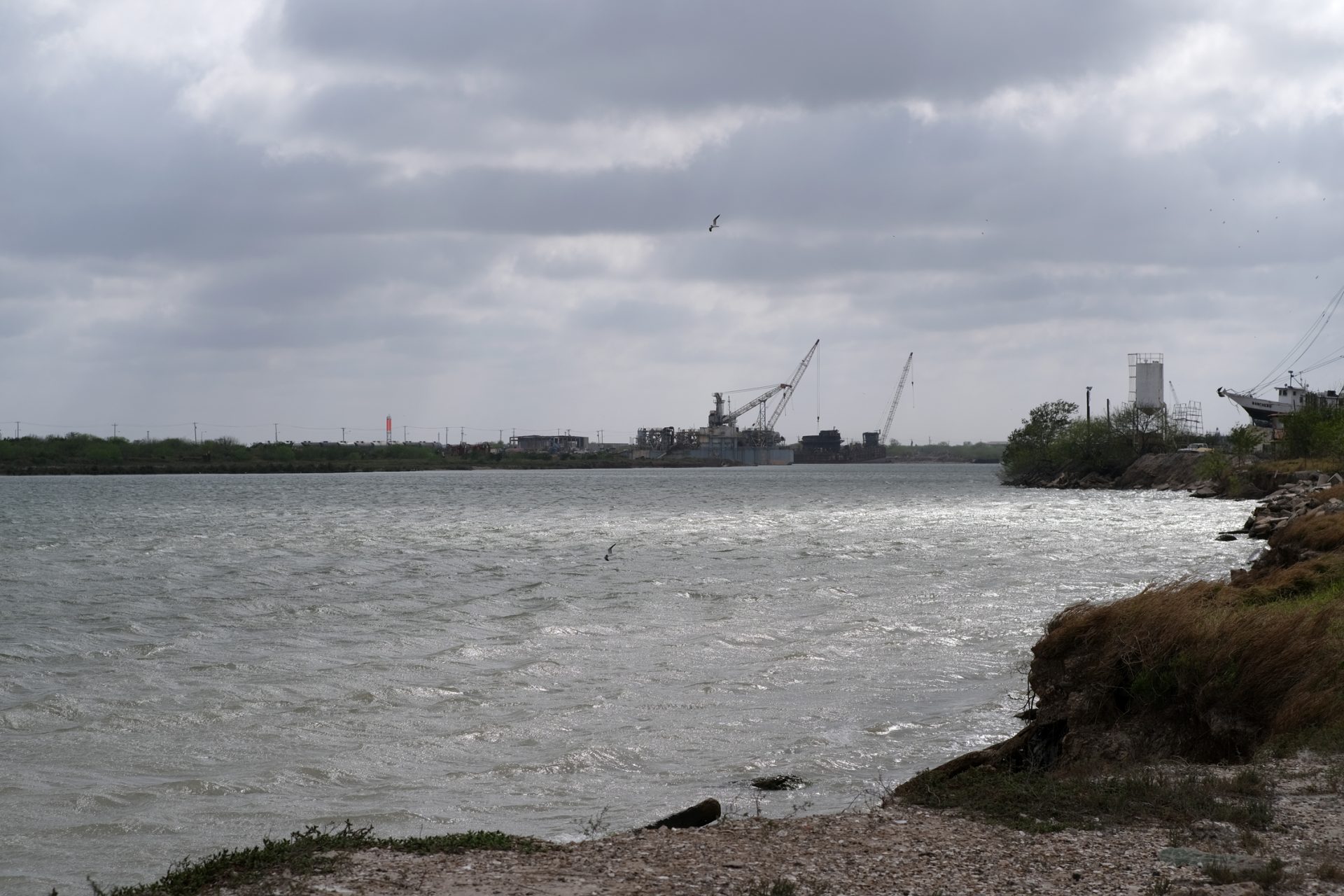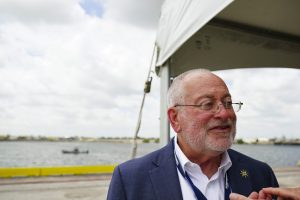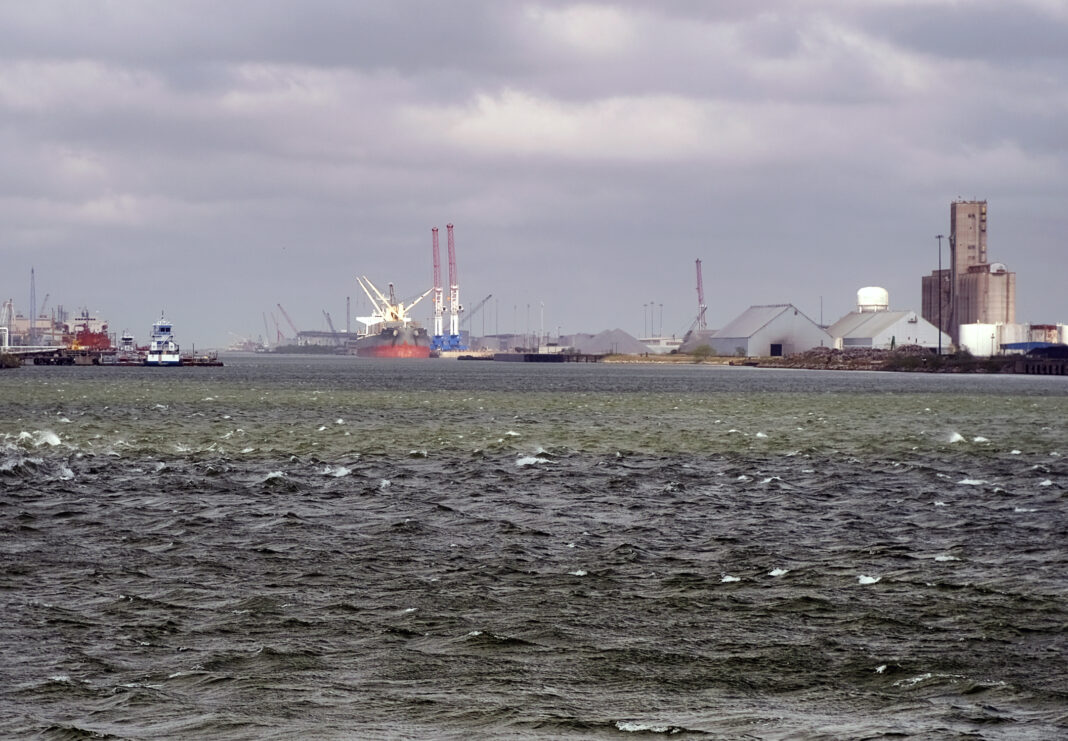|
Only have a minute? Listen instead
Getting your Trinity Audio player ready...
|
More than eight years after Rio Grande LNG LLC submitted a request to the Federal Energy Regulatory Commission (FERC) to begin the pre-filing process on a proposed liquefied natural gas terminal at the Port of Brownsville, parent company NextDecade Corporation on July 12 announced it had made a positive final investment decision (FID) to proceed with construction of the project.
Port officials hailed the decision as great news for the port and the area economy, while environmentalists and others opposed to LNG terminals at the port expressed dismay and criticism.
With the announcement of the FID, NextDecade will commence construction of the first three liquefaction trains, or units, of the Rio Grande terminal, phase one of which will have the capacity to produce 17.6 million metric tons (MTPA) of LNG per year.
When fully built out, the plant will have a capacity of 27 MTPA, according to the company. Natural gas, which is mostly methane, will be transported to the facility via pipeline, liquefied through a super-cooling process and then loaded onto LNG vessels for shipment to foreign customers.
Phase one involves $18.4 billion in financing, making it the biggest greenfield energy project financing in U.S. history, which “underscores the critical role that LNG and natural gas will continue to play in the global energy transition,” according to NextDecade.
“Greenfield” means a project site has not been previously developed. With industry experts forecasting a global LNG shortfall before 2030, projects such as Rio Grande LNG may be necessary to avoid prolonged dependence on other, more carbon-intensive fuels such as oil and coal, the company said.
Rio Grande LNG will sit on 984 acres between S.H. 4 and the Brownsville Ship Channel. Along with the positive FID announcement, Rio Grande LNG issued a notice to proceed to Bechtel Energy Inc, which is contracted to build the plant, to begin construction of phase one.
Esteban Guerra, chairman of the Brownsville Navigation District, said in response to the news that the “future of the Rio Grande Valley’s economy begins at the Port of Brownsville.”
“On behalf of the port and our (BND) board of commissioners, we congratulate NextDecade on their final investment decision announcement for the development of the Rio Grande LNG facility,” he said. “This dynamic project, the largest private infrastructure investment in the state of Texas, will provide good-paying jobs and economic growth to the region.”

Port officials said the project will create thousands of jobs and “stimulate business opportunities for current and future industries in the (RGV) and northern Mexico.” NextDecade estimated that construction of the plant will generate more than 5,000 jobs for the region and increase Gross Domestic Product by $6 billion in Cameron County, $23 billion in Texas and up to $35 billion in the United States.
Port Director and CEO Eduardo Campirano called the project a “generational achievement” and “true game-changer for our community.”

“Its impact will be enormous, significantly benefiting the energy industry of Texas,” he said. “This is a testament to our commitment in advancing the economic interests of our community for greater opportunities and a better quality of life.”
NextDecade’s FID announcement came a day after the filing of two federal lawsuits against FERC for approving Rio Grande LNG (and associated Rio Bravo Pipeline) and Texas LNG, another LNG project proposed for the port. The suits were filed in the U.S. Court of Appeals for the D.C. Circuit by the Sierra Club, city of Port Isabel and the Carrizo Comecrudo Tribe of Texas Inc., a nonprofit cultural heritage organization headquartered in Floresville.
Save RGV, a nonprofit environmental group that has opposed Rio Grande LNG since the beginning, issued a statement calling the project the “largest stationary source of air pollution in the RGV” and claiming that Port Isabel, Laguna Vista, Laguna Heights and South Padre Island will now be “at the epicenter of hazard.”
“For everyone except NextDecade shareholders, and denialists who believe massive petrochemical industrialization in the Rio Grande Valley is a good thing, today is a sad day,” the group said.
In addition to air pollution, Rio Grande LNG will pose a greater risk for fire and explosions than the Valley has ever known while crowding the ship channel and Laguna Madre with LNG ships and significantly harming “nature, fishing and beach tourism” in the process, Save RGV charged.
“For the next five to seven years of construction, this terminal will convert two miles of untouched and undeveloped natural brush, prairie, wetlands, marine nursery and habitat into concrete (and) steel, storage landscapes for 12-story methane ground tanks, jet engine compressors, 24/7 methane flare stacks, lights and noise. … It will spew hundreds of tons of carbon into our atmosphere for the next 30 to 50 years,” the group said.





